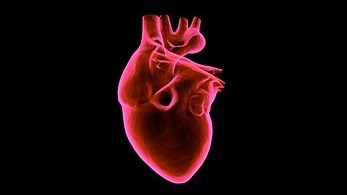
Conditions like paralysis due to spinal cord injury, diseases like cerebral ataxia, and Alzheimer’s disease has a new hope, as researchers have developed a drug that can repair the damaged neural synapses of the brain and spinal cord.
Researchers from the German Center for Neurodegenerative Diseases (DZNE), UK and Japan have developed a drug and in a mice study, they have found that it can repair the connection between the damaged neurons. The study was published in an online journal Science.
Lets get into more detail of this research and how it can give hope to paralysis sufferer in near future.
How this new drug repairs neural connection
Any kind of motor activity like movement of limbs, walking or any other activity happens as a result of well coordinated contractions of muscles. Actually, this muscle contraction is a result of electrical signal that is produced by our brain and which travels down to muscle via circuit of nerve.
This nerve is made up of cells known as neurons. Each neuron is connected to other neurons through a junction which is known as synapses, they are junctions through which nerve signals are passed from one cell to the next. The human brain contains trillions of synapses within a vast network of neurons.
The human brain’s neuronal network undergoes life-long changes in order to be able to assimilate information and store it in a suitable manner. This applies in particular to the generation and recalling of memories. A number of specific molecules — known as “synaptic organizing proteins” — make sure that synapses are formed and reconfigured whenever necessary.
So, information from one neuron is passed on to next neuron through exchange of protein and other chemical activities at synapses.
In a person suffering for Alzheimer’s disease, cerebral ataxia, spinal cord injury, these neural structure and exchange of signal get damaged. Scientists in an mice experiment found that the new drug (an artificial protein) which repairs this synapses.
What actually scientist did
An international team of researchers from Germany, Uk and japan has now combined various structural elements of “synaptic organizing proteins” into an artificial protein called CPTX.
They tested the effect of CPTX in different disease models. To this end, the compound was administered to mice with neurological deficits that occur in similar fashion in humans. Specifically, the tests focused on Alzheimer’s disease, spinal cord injury and cerebellar ataxia — a disease that is characterized primarily by a failure of muscle coordination. All these conditions are associated with damage to the synapses or their loss.
Also read: Hemiplegia can regain hand movement by artificial neural connection
Result of the mice study gives hope
“In our lab we studied the effect of CPTX on mice that exhibited certain symptoms of Alzheimer’s disease”, said Prof. Alexander Dityatev, a senior researcher at the DZNE. “We found that application of CPTX improved the mice’s memory performance.”
Bullet points of all important findings:
- The researchers also observed normalization of several important neuronal parameters that are compromised in Alzheimer’s disease, as well as in the studied animal model.
- Furthermore, CPTX was shown to elevate what is called “excitatory transmission”. This is to say that the protein acted specifically on synapses that promoted activity of the contacted cell. And finally,
- CPTX increased the density of so-called dendritic spines. These are tiny bulges in the cell’s membrane that are essential for establishing excitatory synaptic connections.
- Further research by the study partners in the UK and Japan revealed that the application of CPTX to mice with motor dysfunction — caused either by spinal cord injury or pathological conditions similar to cerebellar ataxia — improved the rodent’s mobility. And at the cellular level, the drug was shown to repair and promote excitatory synaptic connections.
Keep Reading: Stroke Risk Increases with Air Pollution| Finds Study
Journal reference:
- BY KUNIMICHI SUZUKI, JONATHAN ELEGHEERT, INSEON SONG, HIROYUKI SASAKURA, OLEG SENKOV, KEIKO MATSUDA, WATARU KAKEGAWA, AMBER J. CLAYTON, VERONICA T. CHANG, MAURA FERRER-FERRER, ERIKO MIURA, RAHUL KAUSHIK, MASASHI IKENO, YUKI MORIOKA, YUKA TAKEUCHI, TATSUYA SHIMADA, SHINTARO OTSUKA, STOYAN STOYANOV, MASAHIKO WATANABE, KOSEI TAKEUCHI, ALEXANDER DITYATEV, A. RADU ARICESCU, MICHISUKE YUZAKI, “A synthetic synaptic organizer protein restores glutamatergic neuronal circuits“,SCIENCE28 AUG 2020
- Story from: A tailor-made molecule that ties nerve connections
The author is a physiotherapist who has been practising for the last 17 years. He holds a Bachelor's in Physiotherapy (BPT) from SVNIRTAR (Swami Vivekananda National Institute of Rehabilitation and Research), one of the prestigious physiotherapy schools in India.
Whatever he learns dealing with his patient, he shares it with the world through blogs and e-books. He also owns a YouTube channel, "Sunit Physiotherapist" with over 8 lakh active subscribers. Here, he shares everything he gets to learn serving the patient.







Where can I get it ?